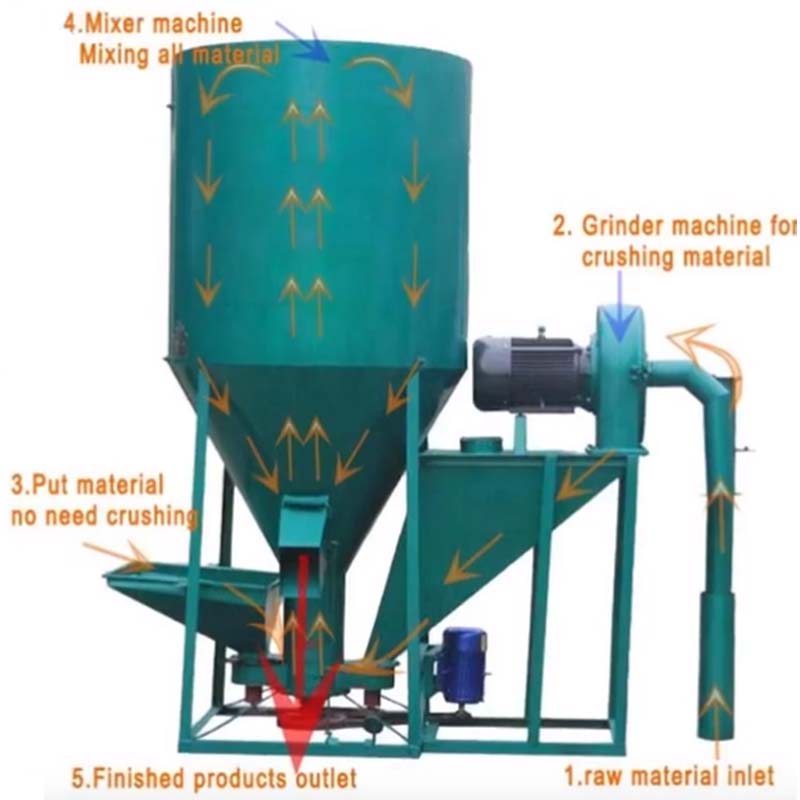poultry feed mixer
Dec . 05, 2024 14:05 Back to list
poultry feed mixer
The Importance of Poultry Feed Mixers in Modern Agriculture
In the ever-evolving landscape of modern agriculture, efficiency and quality come to the forefront, particularly in the poultry industry. One of the unsung heroes of this sector is the poultry feed mixer, a vital piece of equipment that plays a critical role in ensuring the health and productivity of poultry. This article delves into the significance of poultry feed mixers, their operational mechanisms, and their impact on poultry farming.
Understanding Poultry Feed Mixers
A poultry feed mixer is specifically designed to evenly combine various feed ingredients, such as grains, vitamins, minerals, and additives, to create a balanced diet that meets the nutritional needs of chickens, turkeys, and other poultry birds. The effectiveness of a feed mixer lies in its ability to achieve a homogenous mixture, ensuring that each pellet or grain is uniform in texture and nutrient composition. This uniformity is crucial; it directly affects the health, growth, and productivity of the birds.
Types of Poultry Feed Mixers
Poultry feed mixers come in various types, each suited for different scales of farming operations. The most common types include vertical mixers, horizontal mixers, and batch mixers. Vertical mixers utilize a central auger that lifts the feed ingredients as they mix, while horizontal mixers employ a series of paddles to achieve an even blend. Batch mixers allow for the mixing of smaller quantities, making them ideal for farms that require specific, custom formulations of feed.
Operational Mechanism
The operation of a poultry feed mixer is relatively straightforward yet highly effective. Firstly, the selected feed ingredients are loaded into the mixer. Depending on the design, the mixing process may take anywhere from a few minutes to half an hour. During this time, the mixer’s mechanism ensures that all ingredients are thoroughly combined to achieve a consistent mix. After the mixing process, the feed is typically discharged from the mixer into storage bins or directly into feeding systems for the poultry.
poultry feed mixer

Benefits of Using Feed Mixers
Investing in a poultry feed mixer offers numerous benefits to farmers. One of the primary advantages is the ability to customize feed formulations. Different poultry species and ages have distinct nutritional requirements that must be met for optimal growth and health. With a feed mixer, farmers can adapt their feed mixes to provide the right balance of proteins, carbohydrates, vitamins, and minerals.
Furthermore, using a feed mixer enhances efficiency. Mixing feed manually can be time-consuming and prone to errors, leading to inconsistent feed quality. A mixer automates the process, reducing labor costs and ensuring that feed is prepared quickly and accurately. This efficiency not only saves time but also enables farmers to respond swiftly to changes in feed requirements or to experiment with new formulations.
Impact on Poultry Health and Productivity
The welfare of poultry is directly linked to the quality of feed they consume. A well-balanced diet results in healthier birds, improved growth rates, and better egg production. Poultry feed mixers help ensure that birds receive a consistent and nutritious diet, ultimately leading to enhanced performance and profitability for farmers. Consistent feeding also reduces the risk of feed-related diseases, contributing to overall flock health.
Conclusion
In the competitive realm of poultry farming, the importance of machinery like poultry feed mixers cannot be understated. These machines not only streamline the feeding process but also guarantee that birds receive the nutrition they require for optimal health and productivity. As the agricultural sector continues to innovate and adapt to new challenges, the role of feed mixers will remain essential in supporting the growth of efficient and sustainable poultry farming practices. Embracing technology in feed preparation is a step towards securing a more productive future for the poultry industry.
-
Hot Sale 24 & 18 Door Rabbit Cages - Premium Breeding Solutions
NewsJul.25,2025
-
Automatic Feeding Line System Pan Feeder Nipple Drinker - Anping County Yize Metal Products Co., Ltd.
NewsJul.21,2025
-
Automatic Feeding Line System Pan Feeder Nipple Drinker - Anping County Yize Metal Products Co., Ltd.
NewsJul.21,2025
-
Automatic Feeding Line System - Anping Yize | Precision & Nipple
NewsJul.21,2025
-
Automatic Feeding Line System - Anping Yize | Precision & Nipple
NewsJul.21,2025
-
Automatic Feeding Line System-Anping County Yize Metal Products Co., Ltd.|Efficient Feed Distribution&Customized Animal Farming Solutions
NewsJul.21,2025






